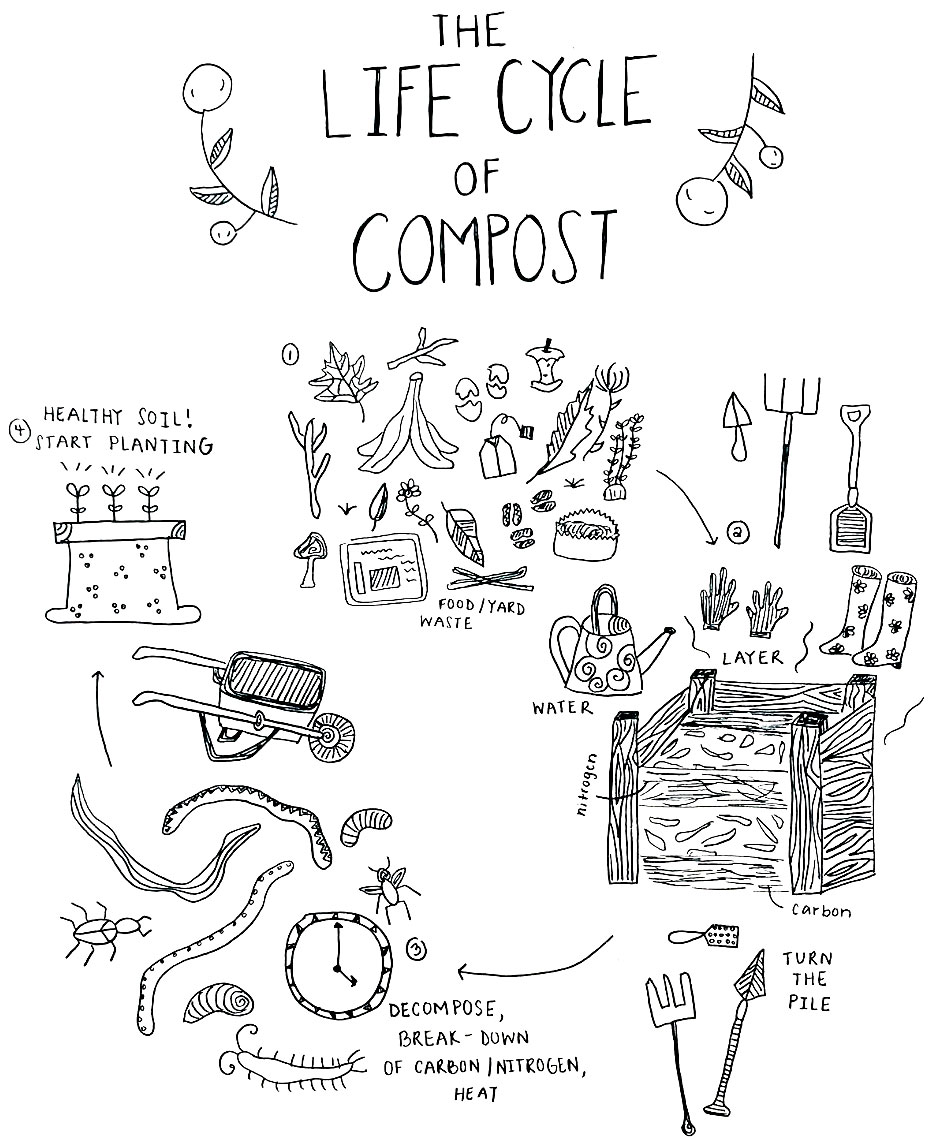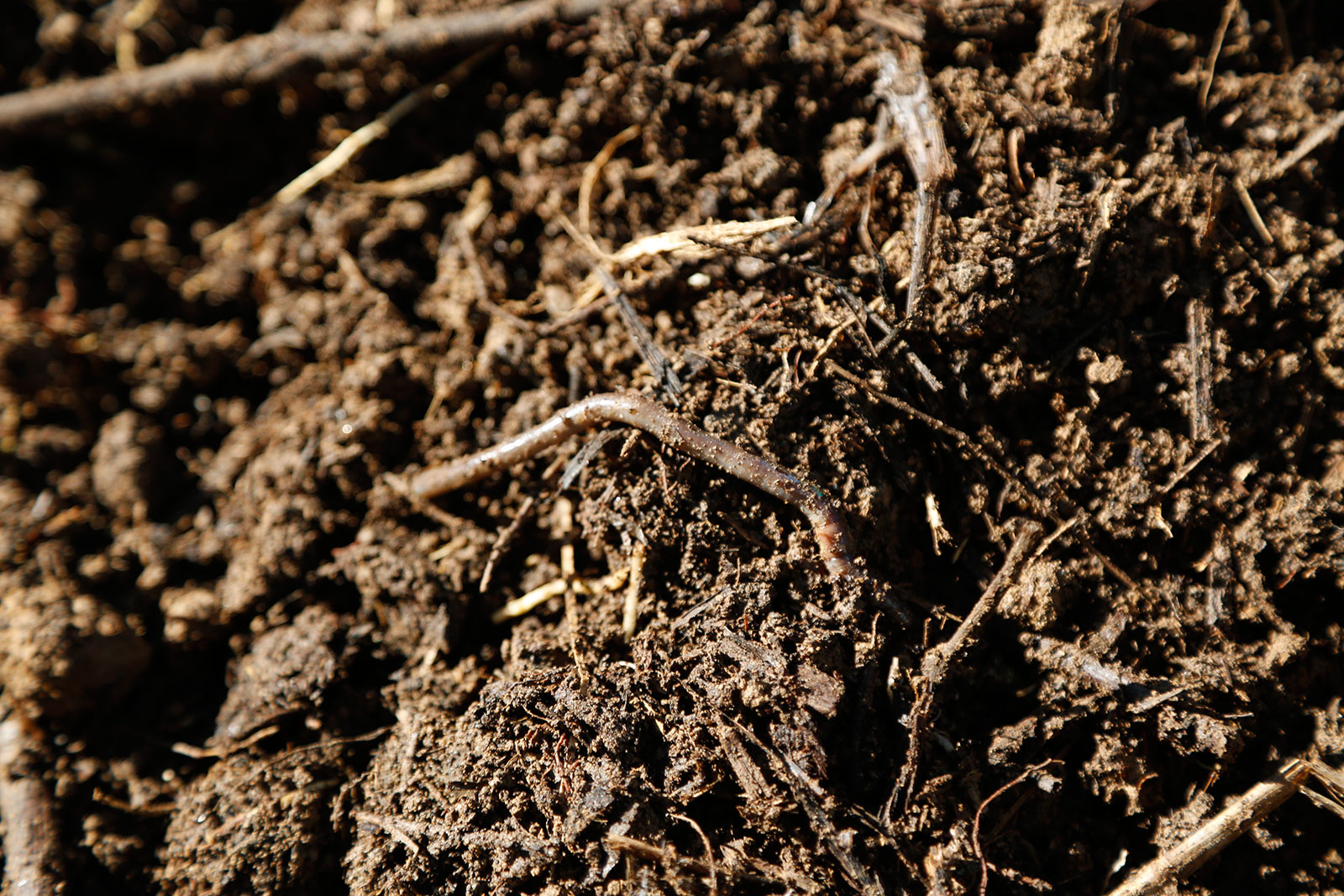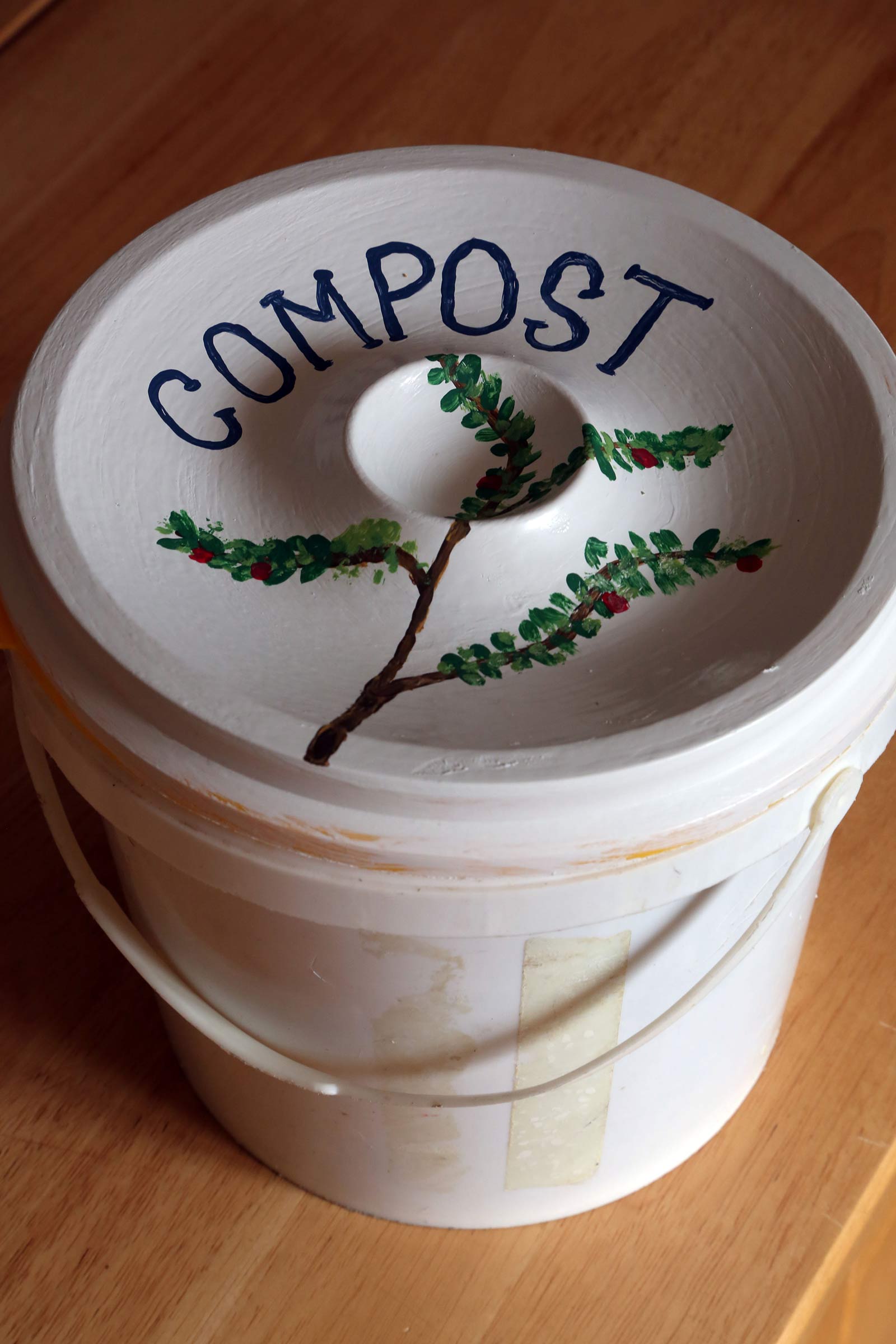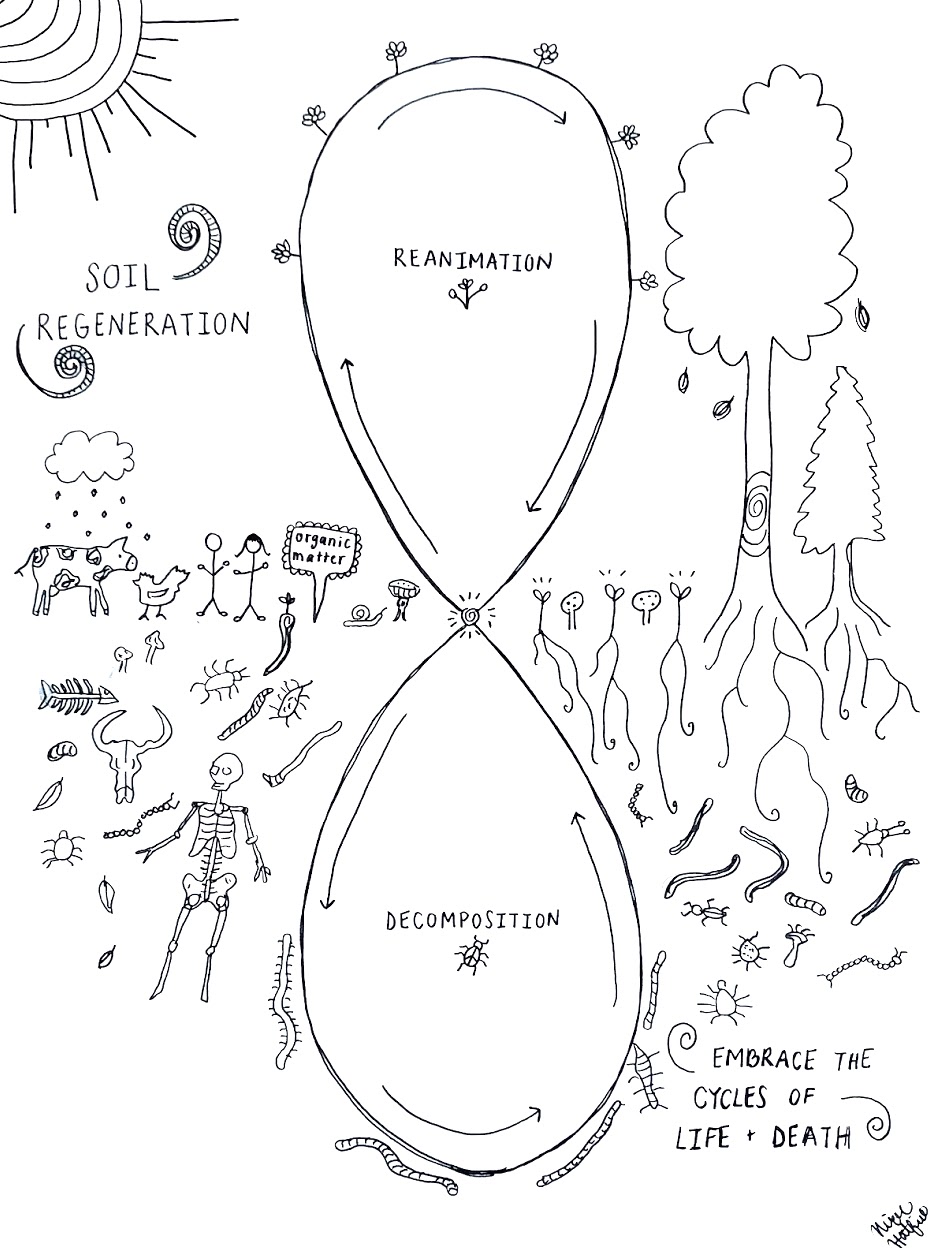Composting
Nutrient density starts with the soil. Nourish the soil food web by creating fertility from waste.

Compost Ingredients
Nitrogen Materials (N): coffee/tea grounds • food scraps • fresh grass clippings • hair • manure • weeds
Carbon Materials (C): cotton rags • dryer lint • leaves • newspaper • paper products • sawdust • straw • wood chips
Supplies
small bucket or container with a lid • pitchfork/shovel
optional: tarp or infrastructure for collection area • comfrey leaves
Method
- Designate a compost area in your yard that can store at least 3 cubic feet of material.
- Collect nitrogen materials. A small bucket or container with a lid works well for food scraps.
- Add scraps to compost area and cover with carbon materials. By weight, the ideal C:N ratio is about 30:1. By volume, we recommend starting with equal amounts of C:N, and adjust as you see how the pile responds. For instance, an armload of dried leaves might offer the same amount of carbon as a handful of sawdust.
- Cover pile with a tarp to keep out animals and prevent rain from rinsing out nitrogen.
- Repeat steps 2-4 till the pile is about 3 feet in length/width/height. If available, periodically mix in comfrey leaves. Add water to keep up moisture levels, keeping the pile like a damp sponge. Once the pile is the desired size, stop adding new materials.
- Turn the pile on a periodic basis to suit your schedule. Ensure the inner core of the pile exchanges places with the outside of the pile during each turning.
Time to Completion and Turning Rates
18 Days
Turn every other day for 18 days.
9 Months
Turn initially and at 90/180 days.
12 Months
Rest pile, no turning.
Using Finished Compost
Bring life to inert soils by spreading ¼ inch of finished compost. Or apply thickly as a topdressing in garden production areas. Thank you for restoring vitality to our living world.
 Finished compost is rich with life and bioavailable nutrients for plants to turn into
food.
Finished compost is rich with life and bioavailable nutrients for plants to turn into
food. A salvaged bucket fits inside a kitchen drawer or cabinet for easy food scrap collection.
A salvaged bucket fits inside a kitchen drawer or cabinet for easy food scrap collection. The soil food web is a constant cycle of decompositon and reanimation.
The soil food web is a constant cycle of decompositon and reanimation.